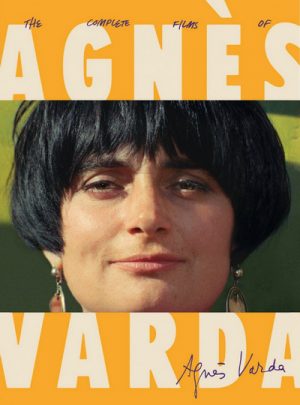
Though often overshadowed by her male counterparts, the Belgian-born Greek-French filmmaker was a New Wave innovator who left a vibrant body of work, all of it restored and available in a new collection. All thirty-nine films from the French cinema icon including essential classics, shorts, documentaries, and multimedia works, together for the first time.
A founder of the French New Wave who became an international art-house icon, Agnes Varda was a fiercely independent, restlessly curious visionary whose work was at once personal and passionately committed to the world around her. In an abundant career in which she never stopped expanding the notion of what a movie can be, Varda forged a unique cinematic vocabulary that frequently blurs the boundaries between narrative and documentary, and entwines loving portraits of her friends, her family, and her own inner world with a social consciousness that was closely attuned to the 1960s counterculture, the women's liberation movement, the plight of the poor and socially marginalized, and the ecology of our planet.
As Criterion did with their 2018 box set, Ingmar Bergman's Cinema, they have chosen not to present these films in strict chronological order. Instead, each of the set's 15 discs has a theme. As one progresses through all these discs, the connections between the films -- and not only those that have been included together -- become clearer. This makes Agnes Varda's output feel like one large, multi-part artwork.

PROGRAMS AND FILMS
• Disc 1 - Agnès Forever — Varda by Agnès (2019), Les 3 boutons (2015)
• Disc 2 - Early Varda — La Pointe Courte (1955), Ô saisons, ô châteaux (1958), Du côté de la côte (1958)
• Disc 3 - Around Paris — Cléo from 5 to 7 (1962), Les fiancés du pont Macdonald (1962), L’opéra-mouffe (1958), Les dites cariatides (1984), T'as de beaux escaliers, tu sais (1986)
• Disc 4 - Rue Daguerre — Daguerréotypes (1975), Le lion volatil (2003)
• Disc 5 - Married Life — Le bonheur (1965), Les créatures (1966), Elsa la Rose (1966)
• Disc 6 - In California — Uncle Yanco (1968), Black Panthers (1970), Lions Love (... and Lies) (1969), Mur Murs (1981), Documenteur (1981)
• Disc 7 - Her Body, Herself — One Sings, the Other Doesn't (1977), Réponse de femmes (1975), Plaisir d'amour en Iran (1977)
• Disc 8 - No Shelter — Vagabond (1985), 7 p., cuis., s. de b. ... (à saisir) (1985)
• Disc 9 - Jane B. — Jane B. par Agnès V. (1988), Kung-Fu Master! (1988)
• Disc 10 - Jacques Demy — Jacquot de Nantes (1991), The Young Girls Turn 25 (1993), The World of Jacques Demy (1995)
• Disc 11 - Simon Cinéma — One Hundred and One Nights (1995)
• Disc 12 - La glaneuse — The Gleaners and I (2000), The Gleaners and I: Two Years Later (2002)
• Disc 13 - Visual Artist — Faces Places, codirected with JR (2017), Salut les cubains (1964), Ulysse (1982), Ydessa, les ours et etc. ... (2004)
• Disc 14 - Here and There — Agnès de ci de là Varda (2011)
• Disc 15 - Beaches — The Beaches of Agnès (2008)
15xBD50 | 1080p AVC | 2611 min | 666 Gb + 3% rec
Language: French, English
Subtitles: English
Genre: Biography, Drama, Documentary, Comedy, History, Romance, Short
| Disc 1: Agnes Forever |
SelectShow |
|---|
Quite appropriately, the set begins with Varda looking back over her body of work. The director's swan song, Varda by Agnes, premiered at the 2019 Berlin Film Festival, just barely a month before the 90-year-old legend passed away. Originally conceived as a master class, the film shows Varda addressing a number of different audiences as she tours through her creative output. This covers mostly film work, of course, but the second half of the documentary opens up a bit to include her early photographic work and later art installations.
Also included is the 11-minute short, Les 3 Boutons (The 3 Buttons), from 2015. It is Varda's last fictional film, and it is a whimsical tale of a young teenage girl who works on a farm and muses about everyday magic and her own personal powers.
Disc 1 Special Features:
• The Art of Family Life: Rosalie Varda and Mathieu Demy (HD, 17:26) - The children of Agnes Varda talk about their life and film work with their mother. Rosalie, who is the spitting image of Agnes, also talks about guiding her mother's later projects to fruition.
• Telluride Film Festival panel (HD, 39:26) - Annette Insdorf moderates a panel of Rosalie Varda, Mathieu Demy, Martin Scorsese, and Telluride co-founder Tom Luddy, who all share personal memories of Agnes Varda.
• Agnes Varda's Credit Sequences (HD upscale, 8:03) - A video essay by Alex Vuillaume-Tylski which examines the openings and closings of Varda's films.
• Sensing Bodies (HD upscale, 1:50) - A brief montage-essay, showing the way Varda isolates and highlights different aspects of the human body in her work.
• A Chat with Nini (HD, 0:30) - A cute vignette of Varda interrogating her cat.
• Trailers - for Varda by Agnes and the Janus Films retrospective of her work.
|
| Disc 2: Early Varda |
SelectShow |
|---|
Here we have Varda's first film, the experimental feature La Pointe Courte (1955). Set in the titular fishing village, the film alternates between the ongoing travails and problems of the locals and the troubled romantic relationship of two visitors. There is intentionally no meaningful overlap between the two narrative threads, leaving room for viewers to muse about class and about the separation between communal life and private life.
In the supplements, Varda talks about having trouble breaking into the film industry after La Pointe Courte. She took a few work-for-hire travelogue gigs in 1958 just to keep at it, and they are included here.
O Saisons, O Châteaux (Oh seasons, oh castles) explores the castles in the Loire Valley. Since most of her subjects are giant stone edifices, Varda gets playful with her color camerawork and editing in a self-conscious way that absolutely must have had an impact on Wes Anderson's style -- and probably François Truffaut's along the way.
The French Riviera doc Du Côté De La Côte (Coasting Along the Coast) is even more colorful and adopts a charming goofiness in its commentary and editing that is reminiscent of Bruce Brown's documentaries like The Endless Summer.
Disc 2 Special Features:
• Mathieu Amalric and Agnès Varda (HD, 8:59) - Actor-director Amalric discusses La Pointe Courte with Varda. Varda offers brief anecdotes about her writing process for the film, then discusses the pitfalls of being a first-time director with Amalric.
• Agnès Varda on La Pointe Courte (HD upscale, 15:43) - Recorded in 2007 for Criterion's 4 by Agnès Varda box set. She talks about her experiences getting to know the fishermen, basing the film's unconventional structure on that of William Faulkner's The Wild Palms, making a guerrilla film with less money than the film really required, and convincing Alain Resnais to edit the film for nothing.
• Cinéastes de Notres Temps (HD upscale, 8:50) - A 1964 excerpt from the French TV show, in which Varda discusses making La Pointe Courte and the difficulty of translating its critical popularity into further work in film.
• Jhumpa Lahiri on La Pointe Courte (HD, 3:54) - Author Lahiri offers an appreciation of the film as part of her Adventures in Moviegoing picks for the Criterion Channel.
• Intros for O Saisons, O Châteaux and Du Côté De La Côte (HD upscale, 3:32 total) - From 2007. Varda talks about how she came to make these travelogue films.
|
| Disc 3: Around Paris |
SelectShow |
|---|
Cléo from 5 to 7 (1962) is probably Varda's best known film. Corrine Marchand plays an up-and-coming young singer named Florence, nicknamed "Cléo" (short for "Cléopatra"), who is waiting on test results to learn if she has cancer. The film begins in color, with Cléo receiving a tarot reading that foretells her doom. She is abruptly returned to the "reality" of black-and-white and the streets of Paris, where she wrestles with her fate in real time.
Varda divides the film in two. In the first half, Cléo remains wrapped-up in her self-centered pop star mindset. She cares most about how she looks and how she is perceived. In the second half, she begins to register more of what is happening in the world around her as she grows more empathetic toward others -- and herself.
Paris is arguably the main co-star of Cléo, so the film is complimented by other works that Varda made showing off Parisian architecture and design. The first is Les Fiancés du Pont MacDonald, set on the titular MacDonald Bridge. This is a very slightly longer cut of the silent-movie interlude featured within Cléo, when Cléo and her friend drop off some film to a projectionist then watch the screen from his booth. For her mock-silent comedy, Varda cast New Wave pals Jean-Luc Godard, Anna Karina, Eddie Constantine, Sammi Frey, and Jean-Claude Brialy.
Included next is Varda's experimental musical documentary/fiction hybrid, L'Opéra-Mouffe (1958). She combines footage of the inhabitants of a skid row neighborhood with her own musings and fantasies about her first pregnancy, and then sets everything to music. In the accompanying interviews, she notes The Threepenny Opera as her influence, and Georges Delerue's songs have a strong Brecht/Weill flavor to them.
Then we jump ahead to 1984's Les Dites Cariatides (The So-called Caryatids), in which Varda is commissioned to examine Paris's caryatids, an architectural feature in which pillars are sculpted in the shape of women. The style Varda utilizes falls perfectly in-between her early travelogues and her later docs, with Varda still designing some eye-grabbing shots and edits complimented by her idiosyncratic narration.
The final film on the disc is a 1986 quickie, produced for the Cinemathèque Française, called T'as de Beaux Escaliers, Tu Sais (You've Got Beautiful Stairs, You Know). It juxtaposes shots of cinema patrons walking up and down the Cinemathèque's staircases with other shots of stairs from films.
Disc 3 Special Features:
• Cléo from 5 to 7: Remembrances (HD upscale, 36:01) - Agnès Varda reflects on the making of Cléo in 2005 along with the cast and crew. They revisit locations and talk about the logistics of making the film, including making sure the geography and visible clocks all made sense for the real-time conceit. Varda and star Corinne Marchand talk about the themes and the main character.
• Madonna, c'est Madonna clip (HD upscale, 2:24) - An excerpt from a 1993 French TV special in which Varda and Madonna discuss an abandoned remake of Cléo that would have been a vehicle for the pop star.
• Cléo's Real Path Through Paris (HD upscale, 9:17) - Famous French cinematographer Pierre-William Glenn retraces Cléo's journey on a motorbike in 2005.
• The Music of Michel Legrand (9:38) - A video essay made for FilmStruck in 2006 by Tony Zhou and Taylor Ramos. It's a concise and thoughtful breakdown of how Legrand's music reflects the mindset of Cléo throughout the film.
• Cléo from 5 to 7 Trailer
• Agnès on Les Fiancés, L'Opéra-Mouffe, Les Dites Cariatides, and T'as de Beaux Escaliers, Tu Sais (HD upscale, 6:11 total) - The director offers some background on these shorts.
• Les Dites Cariatides Bis (HD upscale, 2:16) - A brief video from 2005 showing off more caryatids in Paris.
|
| Disc 4: Rue Daguerre |
SelectShow |
|---|
Continuing through Paris, we zero in on the 14th Arrondissement, which was Agnès Varda's neighborhood for most of her life. In 1976, she produced the delightful documentary Daguerréotypes about the shop owners and street life near her home on Rue Daguerre. Louis Daguerre invented the early photographic process called the daguerreotype, so Varda's title is both a play on that and the word "stereotype" (which has accented "é"s in French). This suggests a somewhat auto-critical acknowledgment that Varda's fly-on-the-wall vignettes and the whimsical interview questions she poses to her neighbors create impressionistic caricatures rather than full-color portraits of each person's life.
There is also some magic to be found in the 2003 short Le Lion Volatil (The Vanishing Lion). Set in Place Denfert-Rochereau, this comic romance follows a psychic-in-training, played by Julie Depardieu. She falls for a guard at the Paris Catacombs who is fond of sleight-of-hand. This should be a tip-off, but Depardieu is soon shocked when both the man and the nearby Lion of Belfort statue both disappear without a trace.
Disc 4 Special Features:
• Rue Daguerre in 2005 (HD upscale, 21:31) - Part update, part reminiscence, and part audio commentary over certain sequences from Daguerréotypes. There is also a great scene where Agnès reads some hate mail while getting her hair colored.
• Bread, Painting, and Accordion (HD upscale, 8:02) - Another 2005 update on the bakery and accordion shop on Rue Daguerre. It also includes a clip from Jane B. par Agnès V. shot in the bakery.
• Daguerreotypes: Photographic Objects (HD upscale, 6:00) - A look at an exhibit of Daguerreotypes and a brief history of the art form.
• The Music Festival (HD upscale, 3:29) - A brief vignette of street music shot by Agnès in 2005, with a bunch of little kids dancing around.
• Intro to Le Lion Volatil (HD upscale, 1:44) - Agnès talks about how the removal of the Lion of Belfort statue for cleaning inspired her story. She also touches on how the film was intended for the omnibus Paris, je t'aime, only to have the producer turn "traitor." In response she says, "The film ended up being short and independent, like me."
|
| Disc 5: Married Life |
SelectShow |
|---|
Agnès Varda's third fiction feature is 1965's Le Bonheur ( Happiness). It might be her most subversive and provocative work, thanks in part to how facile and pleasant it appears to be. Varda cast then-popular TV hero Jean-Claude Drouot as everyman carpenter François Chevalier, and she convinced Drouot's real-life wife, Claire, to play François's wife Thérèse. She also got the couple to feature their real children as the characters' young children. François and Thérèse are blissfully happy with their modest life and burgeoning family, so it seems odd when François starts seriously flirting with a sexy postal clerk named Émilie (Marie-France Boyer). When he starts a full-fledged affair with Émilie, François is totally upfront with her that he is having no trouble at home. François claims he simply wants to add happiness to his existing happiness. Viewers trained by traditional storytelling and centuries of melodramas will be waiting for the other shoe to drop or for everything to fall apart. Much to Varda's credit, that shoe does or doesn't drop -- depending on how you want to view the series of events that occur during the final act of the film.
Her follow-up feature, Les Créatures (1966), was a critical and financial failure upon release. But it has an unsettling energy akin to Le Bonheur that makes it hard to dismiss. That said, it's not as good as it could be. Varda's ambition is maybe a little too vast. This tale centers on a novelist and his traumatized wife, recovering from a car accident in a small village. Michel Piccoli plays the writer. His encounters with the locals take on a strange animosity, which starts to inspire his work. Catherine Deneuve is the wife, rendered mute after the accident. It's kind of a thankless part, especially without dialogue, but Deneuve makes her character naturally luminous. It's fun to see Eva Dahlbeck, who frequently worked with Ingmar Bergman in the '50s, as the proprietor of the local hotel. As the film develops, it takes more of a science-fiction turn and reveals its metafictional intent.
The final film included on this disc is the short documentary Elsa La Rose (1966). The film is a portrait of the then-70-year-old writer Elsa Triolet, as filtered through the writing and poetry of her husband, the surrealist Louis Aragon. While Aragon idealizes his wife, Varda also talks with Elsa about her role as a muse and mentor to her husband. It's unsurprising that she doesn't like the way he puts her on an artistic pedestal, but their fondness and warmth is palpable even so.
Disc 5 Special Features:
• Agnès talks about Le Bonheur (HD upscale, 3:01) - A 1998 intro for German TV. She talks about her inspiration for the film, and a young German boy helps translate some of it for the TV audience.
• The Two Women of Le Bonheur (HD upscale, 6:10) - Rosalie Varda-Demy interviews the two female leads in 2006. They are mostly quite pleased with the film and the debate that it sparked. Claire Drouot says it was a positive landmark for her family.
• Thoughts on Le Bonheur (HD upscale, 15:04) - Four intellectuals -- Michèle Manceaux, Frédéric Bonnaud, Gérard Vaugeois, Fadela Amara -- discuss and pick apart the film.
• Happiness? The People of Fontenay Respond (HD upscale, 5:53) - From 2005. Agnès takes a survey of people who live in the city where Le Bonheur was shot to see what they think happiness is.
• Bonheur: Proper Noun or Concept (HD upscale, 1:35) - More reflections on the concept of happiness.
• Jean-Claude Drouot Returns to Fontenay-Aux-Roses (HD upscale, 10:25) - Le Bonheur's star returns to the shooting locations in 2005.
• Démons et Merveilles du Cinéma excerpt (HD upscale, 4:10) - A TV clip highlighting Varda on set directing Le Bonheur. She adds new text commentary over the footage.
• Trailer for Le Bonheur
• Intro to Les Créatures (HD upscale, 2:42) - From 2012. Agnès discusses her inspirations for the film and offers minor regrets that she didn't push her premise far enough.
• Varda on Set (HD upscale, 18:41) - More like "Varda in Post-Production." An excerpt from a French TV doc from 1965, showing Agnès shooting pickups with Michel Piccoli and working with the composer and conductor on the score, which is somehow orchestrated by punch-card computer.
• Intro to Elsa La Rose (HD upscale, 2:10) - Varda discusses how this was intended as part of a diptych with the other part to be shot by her husband. She shares her memories of the couple and her direction to Michel Piccoli to read his narration faster and faster.
|
| Disc 6: In California |
SelectShow |
|---|
The films included on this disc come from two different time periods: the late '60s and early '80s. During both of these periods, Agnès Varda was in Los Angeles to be near her husband, Jacques Demy, as he wrangled with Hollywood. (The first trip produced Model Shop while Demy's '80s project, a roller-skating Cinderella musical, was never made.)
California inspired Agnès to make concise and curiosity-driven documentaries like Uncle Yanco (1967), about a long-lost relative living in Sausalito; Black Panthers (1968), about the growing revolutionary movement; and Mur Murs (1980), which explores the world of Los Angeles mural art. At the same time, it inspired her to make messy and soul-searching fiction films: Lions Love (...and lies) (1969), featuring Viva from Andy Warhol's Factory and Hair creators Gerome Ragni and James Rado; and Documenteur (1981), a rumination on isolation and single motherhood.
Disc 6 Special Features:
• Intros to Uncle Yanco, Black Panthers, Lions Love, Mur Murs (HD upscale 5:37 total)
• Viva Varda (HD upscale, 9:16) - Agnès and Viva lounge on a bed and talk about Lions Love in this 1970 French TV interview.
• Two Street Artists (HD upscale, 5:23) - A brief profile of two late-'00s street artists in Paris, Jérôme Mesnager and Miss.Tic.
• Mur Murs Trailer
|
| Disc 7: Her Body, Herself |
SelectShow |
|---|
The 1977 feature One Sings, the Other Doesn't is an intimate epic that traces two women through a decade and a half of feminist uprising in France. One Sings couches its plot in the hard realities that women often have to face: the struggle over reproductive rights, single motherhood, and the power inequality in male-female relationships.
The short Plaisir d'Amour en Iran ( The Pleasure of Love In Iran) is a side story created from deleted One Sings footage. The 1975 documentary short Réponse de Femmes ( Women Respond) surveys various women about their womanhood.
Disc 7 Bonus Features:
• Nausicaa (HD upscale, 1:38:25) - The workprint version of an unreleased 1970 TV film, concerning the aftermath of the military coup in Greece. Part documentary, part semi-autobiographical fiction, part Brechtian satire. It touches on a lot of the concerns -- socially, politically, and artistically -- of Agnès's California films from this era. The film elements were confiscated before completion, but arguably this could have stood as one of her best features had she been allowed to complete it. Also it's interesting to see a young and scruffy Gerard Depardieu as a bohemian asshole who rips off the main character.
• Women Are Naturally Creative (HD, 47:22) - This is an excellent documentary portrait of Agnès Varda, at work on One Sings, the Other Doesn't and at home. A pure joy to watch her in her element.
• One Sings, the Other Doesn't Trailer
• Intros to Réponse de Femmes and Plaisir d'Amour en Iran from 2007 (HD upscale, 2:13 total)
|
| Disc 8: No Shelter |
SelectShow |
|---|
In 1985, Varda took an unsentimental but idiosyncratic look at the rarely explored world of female drifters. Vagabond ( Sans toit ni loi, roughly: "Without shelter or law") begins with the haunting image of one such drifter, teenage Mona (Sandrine Bonnaire), as she is discovered dead in a ditch. The authorities rule it an accident and she is unceremoniously buried in a common grave -- from one ditch to another. Then, the film flashes back and chronicles the various interactions Mona had leading up to her death. Structurally, it seems like we are being led into a mystery story, but the bigger surprise might be how Mona survives for so long rather than how she ends.
Accompanying Vagabond is a surrealistic short from 1984. 7p., cuis., s. de b., ... (à saisir) (7rm., kitch., bath., ... (for sale)) is a fragmented look at a dysfunctional family whose experiences seem to haunt an empty house. The film was actually shot inside an art installation inside an old rest home, but Varda uses the surreal juxtaposition of the altered rooms (a bathroom covered in feathers, a kitchen covered in grass) to intensify her dream-logic ghost story. The film also includes appearances by Yolande Moreau and Marthe Jarias, who both found their way into Vagabond.
Disc 8 Special Features:
• Vagabond: Remembrances (HD upscale, 40:37) - From 2003. A mixture of (then-)new interviews, revisits of film locations, and some archival clips.
• The Story of an Old Lady (HD upscale, 3:48) - A brief interview with Marthe Jarnias, who appears in both Vagabond and 7p. The footage was shot on 16mm that has gotten moldy, but the degradation looks cool.
• Music and Dolly Shots (HD upscale, 12:16) - Agnès discusses with composer Joanna Bruzdowicz the 12 dolly shots which punctuate Vagabond and the music that was utilized to link them thematically. All 12 shots are then shown back-to-back with the score mixed prominently.
• To Nathalie Sarraute (HD upscale, 9:18) - Clips from a 1986 radio interview with Agnès and author Nathalie Sarraute, who was a creative role model for the project.
• Plotting in Vagabond (HD 15:28) - An episode of Observations on Film Art for Criterion Channel. Professor David Bordwell examines the way that Vagabond utilizes three different narrative strategies to create a compelling if incomplete portrait of its main character.
• Vagabond Trailer
• Intro to 7p., cuis., s. de b., ... à saisir (HD upscale, 2:10) - She describes the inspiration for the surreal and broken narrative of 7p., and calls it a "totally free film."
|
| Disc 9: Jane B. |
SelectShow |
|---|
Model, actor, and singer Jane Birkin is often overshadowed by her former partner -- both romantically and musically -- Serge Gainsbourg. Gainsbourg shows up briefly in the portrait film Jane B. par Agnès V. (1988), coaching the uncertain Birkin in preparation for her first live concert. But that's mostly it. Varda seems instead more interesting in filling the Gainsbourg role herself in this film, guiding Birkin through artistic conceits and games. She puts Birkin in scenes that sometimes riff on their conversations and reflect moments from her life. She places her in living tableaux based on classic paintings. Varda frames her approach to this portrait as being the facilitator of creative concepts from Birkin, but there is clearly an element of Varda having fun scrutinizing and manipulating a willing model/subject. The end product is the ideal mixture of these two creative forces, transcending celebrity biography and experimental filmmaking to create a colorful moving sketchbook as personal as a shared diary.
The fiction film Kung-Fu Master! (1988), which grew out of the making of Jane B., also carries this feeling of a diary entry realized mostly for an audience of two. In Jane B., Birkin talks about giving Varda a short story she wrote a few years earlier. It involved a 40-year-old woman who fell in love with a 14-year-old boy. What might have served as fodder for another vignette in the Jane B. portrait collage metamorphosed into a full-fledged feature of its own. In fleshing out Birkin's story into a script, Varda tried to ground it in the reality of the world of 14-year-old boys. So, she made the object of affection obsessed with an arcade game called Kung-Fu Master. This film also became a kind of family project, as Varda's son Mathieu Demy was cast as the boy, and Birkin's daughters, Charlotte Gainsbourg and Lou Doillon (then ages 16 and 5 respectively), played the daughters of her character. The end result is both sensitively realized and terribly uncomfortable. Varda does not distance herself or viewers from the real-life stakes of such a situation, but she also finds a narrow path in which the plight of her characters is more touching than disgusting.
Disc 9 Special Features:
• Intros to Jane B. par Agnès V. and Kung-Fu Master! (HD upscale, 4:13 total) - From 2012.
• Agnès V. by Jane B. (HD, 15:30) - A new interview with Jane Birkin. She talks about the creation of the two films and describes Jane B. as more of a portrait of Agnès in which she was a pliable model. She describes Kung-Fu Master! as a sort of time capsule, capturing their children at a turning point in their lives. She also talks about her continued relationship with Agnès after the completion of the films. It's a touching tribute that presents Agnès as a sensitive and often exasperating person.
• Jane B. / Kung-Fu Master! Double Feature Trailer
• Bonsoir clip (HD upscale, 17:40) - A pleasant and slightly raucous interview with Agnès and Jane on Swiss TV discussing the films. There is also a fun montage of trims from the two films.
|
| Disc 10: Jacques Demy |
SelectShow |
|---|
While cinephiles might think of Jacques Demy and Agnès Varda as a dream-team filmmaking couple, they typically kept their respective filmmaking ventures separate. When it became apparent that Jacques was dying of AIDS, Agnès suddenly turned her artistic focus to the life and career of her dying husband. 1991's Jacquot de Nantes (aka Jacquot in the U.S.) is mostly a fictionalized recreation of Demy's childhood, based on remembrances he began writing and sharing with Varda. She also incorporates intimate documentary moments of Jacques in his last days, including intense close-ups examining his gray hair and his sickness-spotted skin. The film is built on the idea that the strongest ideas for Jacques's work came from his childhood, so Agnès shoots her memory piece in many locations that appear in Jacques's films. She also includes excerpts of those films to show how these places and ideas resonated through the years
The two documentaries about Jacques that Agnès made around this time have previously appeared in Criterion's Essential Jacques Demy box as supplements. The Young Girls Turn 25 looks back at the making of Demy's The Young Girls of Rochefort. The small town of Rochefort organizes twenty-fifth anniversary events and an outdoor screening, inviting Agnès, Catherine Deneuve, and some others to attend. Agnès takes the opportunity to interview the locals who were involved in the film as extras. She also includes some behind-the-scenes footage she shot at the time.
The second doc, The World of Jacques Demy, was expressively conceived as the nonfiction counterpoint to Jacquot de Nantes. It's a non-chronological exploration of Demy's film work that riffs on memories and intuition to connect the different projects together. Agnès interviews a number of Jacques's collaborators, but the most unexpected talking head is Harrison Ford, looking very much like Steven Spielberg. Ford explains how he was supposed to be the lead in Model Shop before the studio claimed he had no future in film.
Disc 10 Special Features:
• Agnès Tells the Sad and Happy Adventure Behind the Film Jacquot de Nantes (HD upscale, 17:05) - An interview with Agnès about the making of the film that also includes a new discussion with some of the core crew and the actors who played Jacques's parents.
• Souvenirs and Evocations (HD upscale, 6:35) - Three filmmakers discuss their early experiments with filmmaking as children.
• Jacquot de Nantes Trailer
• Intros to The Young Girls Turn 25 and The World of Jacques Demy (HD upscale, 2:54 total) - From 2012.
|
| Disc 11: Simon Cinéma |
SelectShow |
|---|
In honor of cinema's 100th birthday, Agnès Varda made the relatively big-budget but utterly idiosyncratic love letter to the medium, One Hundred and One Nights ( Les cent et une nuits de Simon Cinéma), in 1995. Michel Piccoli appears as Simon Cinéma, an old man possibly on the verge of death. Simon is a film buff and former film impresario whose resume and legend is ever-mutating depending on whomever he talks to. In a way, Simon is a physical embodiment of the movies, slightly enfeebled at 100 years old and dogged by a spotty memory and frequent hallucinations (often of film pioneers the Lumière brothers, punningly outfitted in suits of lights). He hires young film studies student and Madonna lookalike Julie Gayet to visit his memorabilia-stuffed mansion for 101 nights to talk to him about movies, so she'll spark his memory and make him happy. During this time, Simon is visited by a star-studded cavalcade of friends, including Marcello Mastroianni, Anouk Aimée, Gerard Depardieu, Alain Delon, Catherine Deneuve, Sandrine Bonnaire, Jean-Paul Belmondo, Gina Lollobrigida, Jeanne Moreau, Hanna Schygulla, and... Stephen Dorff? Robert De Niro also briefly appears as a rival for Catherine Deneuve's affections.
Agnès throws in a side-plot, in which Gayet's character attempts to swindle Simon out of his fortune to help pay for the Tarantino-esque short film of her boyfriend (Mathieu Demy), but mostly the film is surreal vignettes, assorted clips, and quippy dialogue about great (mostly French) movies. The tone is loopy, self-referential, and celebratory -- like a late-period Jean-Luc Godard film, but fun. (Of her New Wave pal JLG, Agnès has Simon Cinéma comment, "That Swiss guy talks like a book.")
Disc 11 Special Features:
• A Fun Moment and Michel Piccoli (HD upscale, 8:38) - A brief piece in which Agnès reflects on her intentions for the film and for the character of Simon Cinéma. It includes some interview bits with Piccoli about the character.
• Set Visits (HD upscale, 11:04) - This is actually three pieces stuck together. The first is titled "A Gust of Wind and Marcello Mastroianni," and like the Piccoli piece, it includes an interview with the Italian star in addition some behind-the-scenes of a stormy sequence. The second is a round-up of all the stars who appeared in the film, with Agnès offering commentary. The third is called "The Three D's: Deneuve, De Niro, Delon." It includes behind-the-scenes of the Deneuve and De Niro boat scene which also appears (slightly abridged) in the Varda by Agnès doc, plus on-set footage of Alain Delon's scene.
• One Hundred and One Nights Trailer
• From Rooster to Donkey: Hands and Objects (HD upscale, 20:11) - A three-way conversation between Agnès, Anne Huet, and Alain Bergala about Agnès's short films that literally just shows the participants' hands and objects they pass between them.
• Unfinished Varda (HD upscale, 10:41 total) - Footage from two unfinished projects, a surreal love story called La Melangite and a Christmas-set film co-starring a young and scruffy Gerard Depardieu called Christmas Carole, plus two commercials.
|
| Disc 12: La Glaneuse |
SelectShow |
|---|
Digital video was all the rage in the late '90s and early '00s, taking the place that 16mm once held as the cheap filmmaking option for indie filmmakers. Agnès exploited MiniDV's ease of use to create a documentary that follows every tangential topical byway that her curious mind leads her down. The title of 2000's Les Glaneurs et La Glaneuse (changed to The Gleaners and I in English-speaking countries) refers to the people who glean food from the ground, left over after a harvest, and to Agnès the filmmaker, who gleans images with her portable camera. This idea of a cine-gleaner speaks to the looseness and openness with which she approaches the project.
The film mostly profiles poor French citizens, who pick up potatoes rejected by the local farm or who scavenge the trash at farmer's markets. But from there, Agnès also investigates those who grab grapes to make wine for pleasure and those who scavenge ideologically, because they hate to see edible food go to waste. The film demonstrates that France has a long history of legal gleaning; Agnès even shows many instances where it is the subject of famous French paintings. Further connecting gleaning to art, she talks to creators of varying levels of prestige who use found objects in their visual art.
The Gleaners was a surprise worldwide success, so Agnès made a follow-up for the DVD release, The Gleaners and I: Two Years Later (2002). This film touches on the outpouring of mail and positive reactions toward The Gleaners. This inspires Agnès to visit some of the people who sent her mail. She also checks in with many of the people she talked to in the first film.
Disc 12 Special Features:
• Post-Filmum to The Gleaners and I (HD upscale, 0:43) - A short postscript.
• The Gleaners Museum (HD upscale, 23:43) - A discussion of various French paintings showing gleaners at work.
• Pre-Filmum to The Gleaners and I: Two Years Later (HD upscale, 3:01) - The entire first film in fast-forward, acting as a kind of hyperactive "Previously on..."
• Tribute to Zgougou (HD upscale, 2:09) - A delightful mini-portrait of Agnès's cat and production company mascot.
|
| Disc 13: Visual Artist |
SelectShow |
|---|
At age 89, Agnès Varda became the oldest person nominated for a competitive Oscar. It was for 2017's Faces Places ( Visages Villages), a collaborative documentary with street artist and photographer JR, who is fifty or so years her junior. Together, they go to different small villages and rural areas in search of people to meet and photograph. They drive around in JR's specially made truck that looks like a giant camera and has a photo booth inside. The truck also produces giant photo prints that can be used for pasting, which makes for great large-scale neighborhood group portraits. Agnès and JR seek to create installations that spring from the areas they are exploring.
The disc includes three short films that were previously presented together as CineVardaPhoto. These shorts are also related to photography and explore, to varying degrees, the stories, the context, and the humanity represented by those images.
The first chronologically is Salut Les Cubains (Hello, Cubans!), from 1964. This short is made almost entirely of stills shot in post-revolution Cuba, edited and sometimes animated in a style similar to Chris Marker's La Jetée. Agnès admits in her 2007 intro that the film's idealistic and optimistic narration about Cuba under Castro turned out to be short-sighted, but it's still a great collection of photography that has been inventively presented.
The 1982 short Ulysse concerns a photo that Agnès shot in the '50s on the beach. In the image is a dead goat who likely fell off a nearby cliff, a naked man looking out to sea, and a naked young boy seated near the man and looking back at the goat. (This image is also referenced in Faces Places because they visit the beach where it was photographed.) Agnès reconnects with her models nearly three decades later and tries to piece together the shared meaning of the image.
The final short from 2004, Ydessa, Les Ours, et Etc (Ydessa, The Bears, and Etc), focuses on an exhibit curated by Canadian artist Ydessa Hendeles. It consists of an overwhelming barrage of framed photographs from the early 20th Century of people with teddy bears. Agnès highlights several dozen of these photographs, unpacking different visual and historical themes, including World War II and the Holocaust. She also goes to Toronto to interview Ydessa Hendeles to discuss her work.
Disc 13 Special Features:
• Chance Is the Best Assistant: Agnès Varda and JR on Faces Places (HD, 46:39) - A wonderful, lively English-language interview with Agnès and JR for the Cohen Film Collection release of Faces Places.
• The Beach Cabin (HD, 4:03) - An outtake from Faces Places, where they paste the photograph Ulysse on a small cabin close to where the image was captured.
• A Visit with Matthieu Chedid (HD, 3:41) - The composer for Faces Places visits Agnès in her courtyard along with JR.
• Faces Places Trailer
• Intros to Salut Les Cubains, Ulysse, and Ydessa, Les Ours, et Etc (HD upscale, 5:01 total) - From 2007.
• One Minute for One Image (HD upscale, 26:43) - A collection of brief segments for French TV in which Agnès offers commentary on a handful of wildly different photographs for roughly a minute apiece.
|
| Disc 14: Here and There |
SelectShow |
|---|
Released in 2011, Agnes De Ci De Là Varda ( Agnès Varda: From Here to There) is a 5-part TV series tracking Agnès's travels for roughly a year. She travels to promote The Beaches of Agnès (see Disc 15), to collect awards and attend retrospectives, and also to supervise art installations she devised. While it takes a little time to finds its rhythm, De Ci De Là is an agreeably art-centric travelogue that bounces around Europe, and North and South America. Agnès profiles artists and exhibitions, and she includes encounters with fellow filmmakers like Chris Marker (who only speaks off-camera), Carlos Reygadas, Manoel de Oliveira, and Alexander Sokurov. One charming vignette has her returning to La Pointe Courte to reconnect with some of the people who appeared in her first film.
No special features on Disc 14.
|
| Disc 15: Beaches |
SelectShow |
|---|
The set wraps up as it began: with another look back. In this case, it's 2008's The Beaches of Agnès ( Les plages d'Agnès). Anyone watching this set in disc order will be very familiar with the clips and stories that make up the majority of this self-portrait, but Agnès always seems to be engaging with her past and the images she has made from slightly different angles on each revisit. Compared to this set's opening bookend, Varda by Agnès, we are treated to a less work-focused rendering of Agnès's past. Memory, history, and emotion guide the narrative here. Also, some fun details surface that aren't touched upon elsewhere, like the use of a single 300-foot power cable to film all of Daguerréotypes -- meaning Agnès and her crew never traveled more than 300 feet from her home to shoot their footage.
Disc 15 Special Features:
• Quelques Veuves de Noirmoutier (HD upscale, 1:12:07) - A collection of images and stories from Agnès's art installation, The Widows of Noirmoutier. A melancholy and moving exploration of loss and grief.
• Installations (HD upscale, 1:07:29) - A guided tour through Agnès's art installations of the past decade-plus. Much of this material also appears in the Varda by Agnès documentary, but some of it is unique.
• On Trapeze Artists and Acrobatics (HD, 9:45) - A fun behind-the-scenes piece, which looks at the set-up of a sequence with trapeze artists at the beach. This is accompanied by footage of the film's production manager talking about the "acrobatics" of raising money for the film while hanging upside down in a gym.
• Daguerre Beach (HD, 9:22) - Another fun piece that involves the creation of a "beach" on Rue Daguerre outside Agnès home and office for the film. She also has a discussion with one of her neighbors about the themes of her work.
• In Her Own Image: Kelley Conway on Agnès (HD, 15:14) - Professor Conway talks about the way Agnès portrays herself onscreen throughout her career and especially in The Beaches of Agnès.
• Trailer
|
Agnès Varda invested all of her films with a restless energy, the spirit of curiosity, and an uncompromising idiosyncrasy. Her early films challenge the norms of fiction and nonfiction filmmaking by picking and choosing elements from both modes and combining them in unexpected ways. Her more recent self-portraits and self-reflexive films are an even better showcase for Agnès's passionate and compassionate soul. When viewers see the films of Agnès Varda, they feel like they know her and wish they could have met her in person. She's inspiring as an artist -- and as a human. This beautifully presented and richly supplemented collection of Agnès Varda's complete cinematic work is an unparalleled triumph.
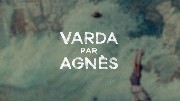
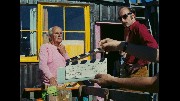
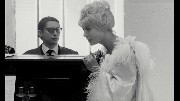
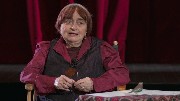
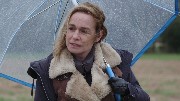
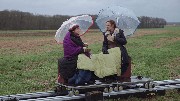
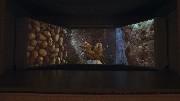
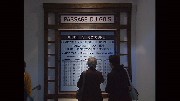

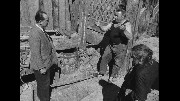

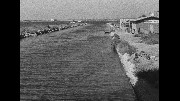
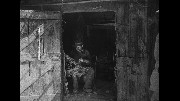
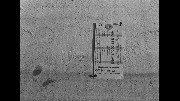
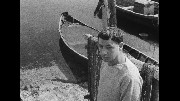
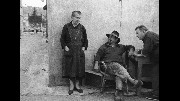
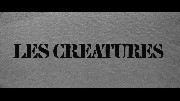
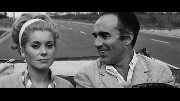
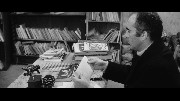
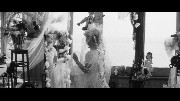
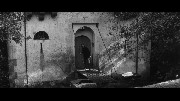
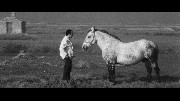
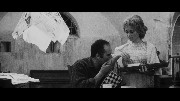
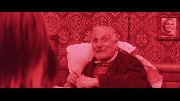
Did you like this?
Tip movieworld with Cryptocurrency
Donate Bitcoin to movieworld
Donate Bitcoin Cash to movieworld
Donate Ethereum to movieworld
Donate Litecoin to movieworld
Donate Monero to movieworld
Donate ZCash to movieworld


























Another pile of gems... speechless!
class is not water, just great 🙂
Hi there. Links are unavailable for several hours now, at least discs 13 and 14. Could you fix it? Thanks.